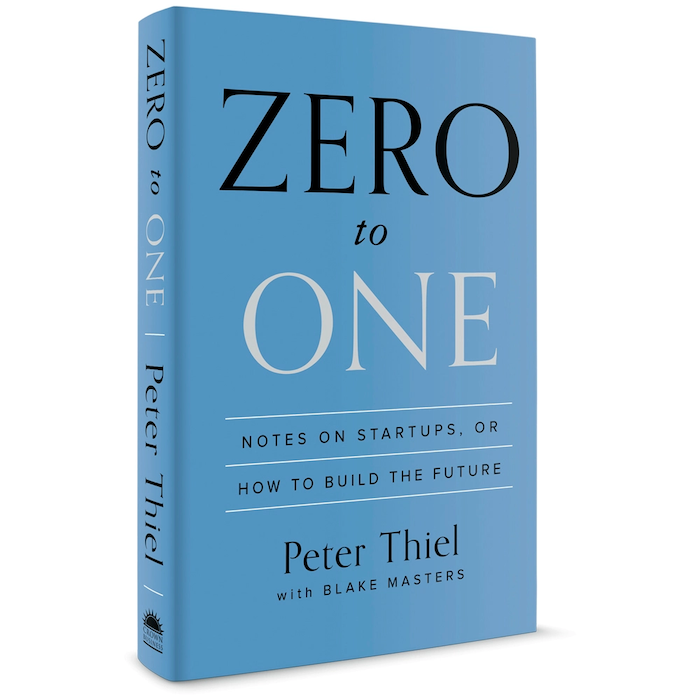Video: Annual Planning and the Art of Roadmapping
Video: Annual Planning and the Art of Roadmapping with Sachin Rekhi
It's that time of year that product managers find themselves engrossed in annual planning. But the traditional frameworks PMs have come to rely on for roadmapping, like RICE, often are ill-suited for putting together a highly strategic product roadmap for the upcoming year.
I joined Reforge recently to give a talk about a new process I developed, called 4D Roadmaps, that leverages 4 distinct lenses to develop your roadmap, including a strategy lens, vision lens, customers lens, and business lens. In the talk, I share this actionable process for putting together a more strategic, aspirational, and well articulated roadmap for your product.
Video: Product Management & Innovation with Productboard
Video: Sachin Rekhi on Product Management & Innovation | Behind the Roadmap
I recently joined Productboard in my home for a conversation about all things product management and innovation.
We covered so many topics in this 15 minute video, including:
- My favorite books on product management, including The Creative Act by Rick Rubin, Creative Selection by Ken Kocienda, and The Everything Store by Brad Stone
- The 3 types of product managers: builders, tuners, and innovators
- Limitations of the lean startup for bringing a new product to market
- How to pick the next company to join on your career journey
- How to take advantage of the recent technology waves of crypto and generative AI
- A tour of my home office, the places I do my most creative work, and plenty of cameos from my dog Dexter!
A Primer on Cultivating Taste from Legendary Producer Rick Rubin

I've always felt that product design was a creative endeavor and the work that most moves our industry forward stems from practitioners who could easily be described as artists. Given this, I've often wondered whether one of the best ways to improve our craft as product designers would be to immerse ourselves in the best practices of artists at large. I got the chance to explore exactly that when legendary producer Rick Rubin, behind iconic artists like Adele, Linkin Park, and Red Hot Chili Peppers, published his new book. In The Creative Act, Rubin shares everything he has learned about harnessing your creativity from his decades working with some of the most successful recording artists of our time.
Video: How Today's Product Builders Find Product/Market Fit
Video: How Today's Product Builders Find Product/Market Fit
I recently had the opportunity to sit down with Fareed Mosavat, Chief Development Officer at Reforge, for a discussion on how today's product builders find product/market fit.
We started by pointing out the shortcomings of the Lean Startup methodology, which remains the most popular approach to finding product/market fit today. We then discussed some of the more modern approaches that seasoned product builders have been leveraging to guide their path to product market fit, including:
- Running successful customer discovery interviews that avoid the typical trap of confirmation bias
- Deeply exploring the idea maze up-front to avoid unsuccessful paths
- Leveraging a portfolio of validation techniques beyond simply building MVPs
- Rigorously measuring product/market fit via retention & growth
- Growing users via a two-prong approach of generating early traction and then developing a sustainable growth loop
New Course: Finding Product/Market Fit

The hardest part of bringing a new product to market is always the elusive hunt for product/market fit. Marc Andreessen describes product/market fit as "being in a good market with a product that can satisfy that market". I've dedicated my entire career to five such hunts across the three startups I co-founded as well as the new products I built at LinkedIn and Microsoft. Despite sounding so simple, I have plenty of scars from failing to find product/market fit, but also from the long and winding path it ultimately took to get there.
In 2007 I founded my first startup, Anywhere.FM, which developed a web music player that allowed you to upload your entire music collection to the web and then stream it from anywhere. Influenced by being an early Y Combinator company, we leveraged the emerging Lean Startup methodology popularized by Eric Ries. The methodology was a direct reaction to the failures of dot com era startups, including their focus on putting together elaborate business plans and enduring long product development cycles before launching to customers. Instead the Lean Startup encouraged launching a minimum viable product (MVP) as quickly as possible to maximize customer feedback from real users. So we did just that: hurried an MVP to market in a matter of months and got tons of early feedback from customers. But despite doing this, garnering glowing press reviews, and growing to over 100,000 users, we still ultimately failed to find PMF because we were never able to find a viable business model for our product. While we were ultimately acqui-hired by imeem for the impressive tech we had developed, our dreams of building an independent web music player were over.
Video: Product Strategy, Getting Buy-In, and Startup Ideas

Video: Product Strategy, Systems, and Frameworks with Sachin Rekhi
Slides: LinkedIn Learning: Product Strategy, Systems, and Frameworks
I was recently invited to speak as part of the Product Management Learning Series hosted by LinkedIn Learning. We covered a variety of my favorite product frameworks.
We started our discussion with some of the most effective ways to make a career transition into product management. The first approach is leveraging an adjacent role, like business operations, marketing, design, and engineering, to work with and impress your product partner and parlaying that experience into a product role. We also talked about how domain experts are often recruited to become product managers even without functional product experience. For example, I've had a friend with a masters degree in education become a product manager at an edtech startup, a sales operations professional become a PM at a sales tech startup, and an MD become a PM at a health care startup.
We then moved the discussion on to how to come up with a compelling product strategy. We covered the 6 dimensions that every product strategy needs to address, including the problem you're solving, target audience, value proposition, competitive advantage, growth strategy, and business model. And we discussed how you need to have strong interplay or coherence amongst the dimensions for your strategy to be compelling.
The Power of Amazon's Written Narratives

For years now I've been obsessed with understanding unique product cultures and how they enable companies to build world class products. One particular product culture that has always fascinated me is Amazon and their unique writing culture. I love talking to Amazon employees about how the writing culture is interwoven into their product development process and the pros and cons of it. But I was even more excited when Colin Bryar and Bill Carr published their new book, Working Backwards, which provides a deep dive into how the writing culture originated, the problems it sought to solve, the benefits it introduced, and the competitive advantage it created for Amazon. I wanted to share what I learned from the book for those evaluating whether to bring a writing culture to their own product teams.
Peter Thiel's Anti-Lean Manifesto

The Lean Startup methodology, first described in 2008 by Eric Ries, has taken the startup world by storm. His 2011 book, The Lean Startup, has become a New York Times best seller, selling millions of copies to aspirational entrepreneurs. The concepts the methodology describes, from hypothesis testing, to MVPs, to pivots, have become common vernacular in startup circles. And every major business school now offers an innovation class that leverages the business model canvas and other lean principles for developing a new product idea.
When an ideology becomes dominant, I find it helpful to read other perspectives on the topic to better inform my own thinking around it. So this past week I decided to re-read Peter Thiel's Zero to One, another New York Times best seller, that he published in 2014 based on lecture notes from a course on startups he taught at Stanford in 2012. Peter Thiel, the consummate contrarian, delivers a compelling anti-lean startup manifesto and offers an alternative playbook for startup founders. I wanted to share that perspective and playbook for startup founders looking to build a more robust toolkit for finding startup success.
Top 50 Resources on Product/Market Fit

The most important journey any new product goes through is finding product/market fit. Marc Andreessen, who popularized the term, defined it as:
Product/market fit means being in a good market with a product that can satisfy that market.
Despite sounding so simple, the majority of new products fail due to never finding this illusive fit. This fit illudes both new startups creating their very first product as it does established organizations seeking to expand their product portfolio. From Viddy to Quibi to Google Wave, we can all name famous product failures. And even more die quietly without such fanfare.
As a serial entrepreneur, I've been on a quest to learn how best to find product/market fit for each new product I build to avoid the pitfalls so many run into. In doing so, I've been collecting the very best resources on the topic for years. After reading and watching hundreds of essays, books, and videos, I wanted to share a curated collection of the very best resources I've found to help give you the best chance of finding product/market fit for your own product.
These resources cover everything from defining product/market fit, motivating it's importance, developing an experimentation culture to help you pivot towards product/market fit, measuring product/market fit, and case studies of startups own journey to product/market fit.
While they certainly won't guarantee your success, being well versed in the mental models, tools, and processes these resources offer will undoubtedly increase your chances.
Video: How to Master Influencing Without Authority
Video: How to Master Influencing Without Authority
Slides: How to Master Influencing Without Authority
Essays: The Art of Being Compelling | Engaging in Product Debates | The Most Underrated Product Management Skill: Influence Without Authority
In June I was invited by Dan Olsen to speak at the Lean Product Meetup. I decided to give a talk on what I believe to be one of the most underrated skills in product management: influencing without authority.
It's widely understood that product managers own the product but do not manage any of the resources required to successfully launch and iterate on it. Despite understanding this, PMs often under-invest in building the crucial skill of influence without authority. Whether it's engineers or designers on their team, cross-functional partners, or executives, PMs must be able to effectively influence each of these stakeholders in order to launch world-class products for their customers. In this talk I share my framework and best practices for doing just that. I'll walk through how to make compelling arguments specifically targeted at each stakeholder you need to influence. And thereby significantly improve your ability to convey ideas, reduce decision churn, and get your projects greenlit.

